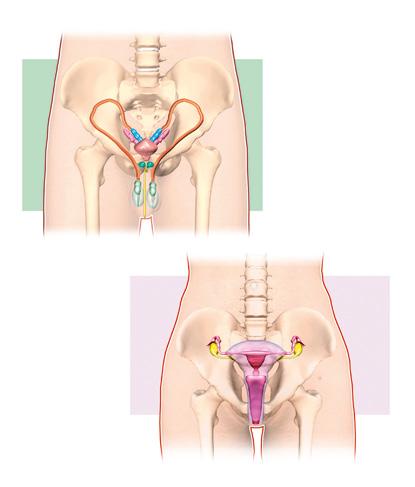
2 minute read
let’S REVIeW!
1 Make word clouds in your notebook, one for each type of nutrient, including examples of foods from each group. Use different colours for each word cloud.
2 Look at the following images and identify what they are. Write the name of the organ, which system it belongs to and its function.
3 Write the name of the organ from the circulatory system described in these sentences.
a) A muscle that is divided in two halves, called atrium and ventricle. Blood comes to collect oxygen and is pumped out again.
b) Blood vessels that carry blood high in carbon dioxide to the heart.

c) Thin vessels that connect blood and cells so they can exchange oxygen and substances.
d) Blood vessels that transport blood rich in oxygen from the heart to the rest of the body.


4 Copy and label the picture with the types of blood cells.
a) Tiny sacs in the lungs that exchange oxygen and carbon dioxide.
b) Substance released by the liver to break down food food and separate nutrients.
c) Tiny blood vessels that exchange substances between the cells and the blood.
d) A tube through which blood circulates around the body.
e) Food that is chewed and mixed with saliva.
f) Group of nutrients that provide the body with energy.
g) Mass of partially digested food that leaves the stomach.
h) Muscle located below the lungs that helps in the process of breathing.

i) Process to eliminate waste from the body.
j) Waste material that is not used after digestion.
k) Substances in the stomach that help digest food.

l) Process of taking nutrients and transforming them into energy.
m) The liquid component of blood that transports blood cells n) Blood cells that help open wounds stop bleeding. o) Substances that are useless for the body and have to be eliminated.
MY ProGRESS
• I can explain the process of nutrition.
• I know what body parts play a role in digestion.
• I understand what a balanced diet is.
• I can name the different types of nutrients and food groups.
• I know how we breathe.
• I can explain how the circulatory system.
• I can explain how the excretory system and the sweat glands work.
1 Write the name of the vital function that is described: a) Using substances to help the organism grow, stay healthy and eliminate waste. b) Reacting to stimuli and responding to changes in the environment. c) Creating new living organisms.
1 Copy the drawings of these cells and label them in your notebook.
3 Match the types of tissues with their definition in your notebook.
1. Epithelial a) It allows movement.


2. Nervous b) It lines organs.
3. Muscle c) It plays a role in transmitting impulses.
4. Connective d) It connects or separates other tissues.
Think 4 Complete the table with the organs. Some may go in more than one column.
• Stomach
• Kidneys
• Nose
• Heart
• Lungs
• Mouth
• Bladder
• Oesophagus
• Pancreas
• Trachea
• Sweat glands
• Arteries
• Alveoli
• Intestines
• Urethra
• Liver
• Veins
• Ureters a) Red blood protect against infection. b) White blood cells transport oxygen around the body. c) Platelets are the most numerous cells in our blood. d) Platelets transport carbon dioxide.
DIGESTIVE SYSTEM RESPIRATORY SYSTEM CIRCULATORY SYSTEM EXCRETORY SYSTEM ? ? ? ?
5 Copy and correct the sentences in your notebook.
6 Which organ… a) ... produces gastric juices? b) ... helps oxygen enter into the bloodstream? c) ... pumps blood so that it is in constant movement? d) ... stores urine until it is expelled from the body?
7 Classify the following foods as energy-giving foods, body-building foods or protective and regulatory foods.

















